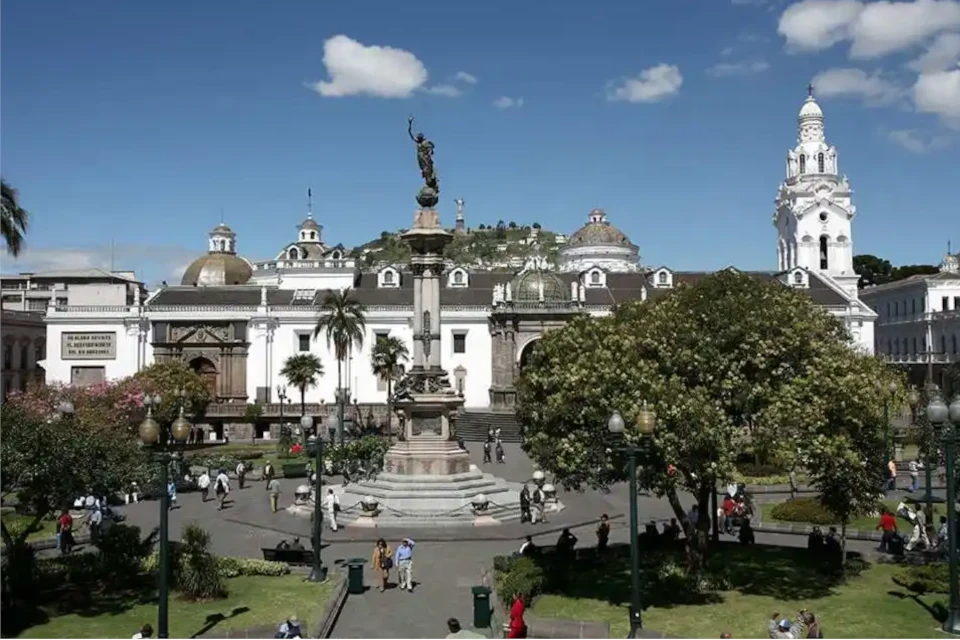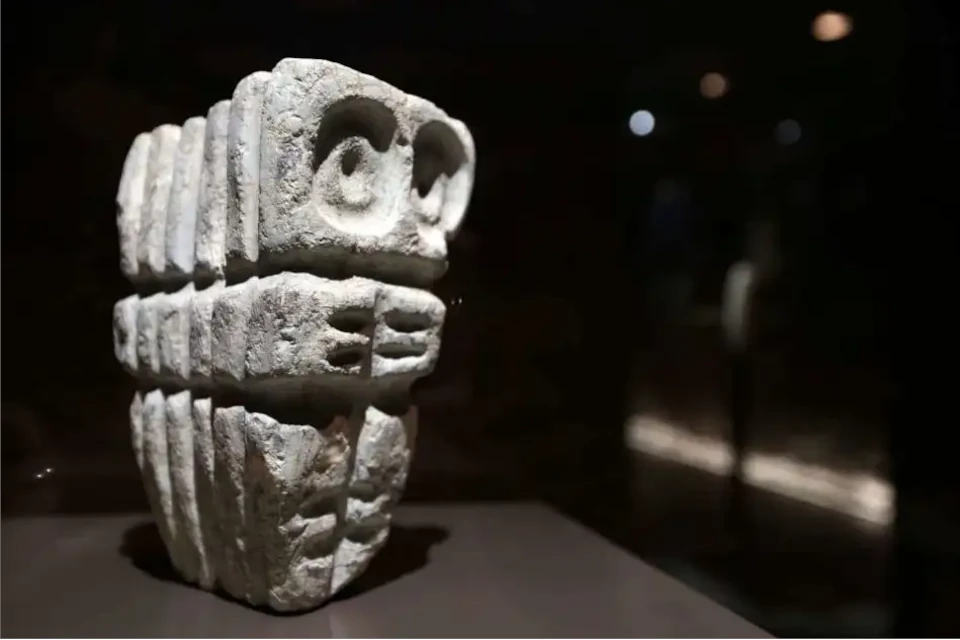Which city should you visit in Ecuador, Quito or Guayaquil, and what unique experiences do each destination offer? Explore the wonders of Quito and Guayaquil, two of Ecuador’s most enchanting cities.
Quito, known as the “Carita de Dios” or Face of God, is a UNESCO World Heritage Site with a rich history and stunning architecture.
Guayaquil, the “Pearl of the Pacific,” is Ecuador’s largest city, boasting vibrant urban life and scenic beauty.
This guide offers a glimpse into both Quito vs Guayaquil’s unique character and attractions, inviting you to discover their cultural and natural splendors. Join us on a journey through the heart of Ecuador’s heritage and modern charm.
You may also like: Find Out When is The Best Time To Visit Ecuador
Quito
Why do they call it the ”Carita de Dios”?
Quito, the capital of Ecuador, was founded in the 16th century on the ruins of an Inca city and stands at an altitude of 2,850m. Museums, theatres, churches, and the traditional neighborhoods of the historic center, such as San Marcos, San Blas, San Juan, Santo Domingo, and La Ronda, open their doors wide and invite you to discover the magic and history of the “Carita de Dios,” the first city in the world to be declared a World Heritage Site in 1978 by UNESCO.
“Carita de Dios”, “Quito luz de América,” and “Eden de Maravillas” are phrases that served in the 20th century and throughout time to qualify its beauty.

Tourist attractions in Quito
- Centro Histórico de Quito
The Historic Center of Quito is Latin America’s most significant heritage site, containing around 130 monumental buildings and more than 5,000 properties registered as historic heritage. Around 17 museums and 24 churches, convents, and monasteries can also be found. Several of Quito’s churches are architectural gems built more than a hundred years ago and are important because they have survived the changes over time.
- Basílica del Voto Nacional
Basilica del Voto Nacional is a gothic-style church, the largest in Ecuador. It is one of Quito’s most visited tourist places, in the Historic Center. It is the only Ecuadorian church blessed by a Pope. John Paul II called it and gave his blessing in 1985.
- El Panecillo
The Panecillo is a natural elevation of 3000 meters above sea level; it is known by this name because it resembles a small loaf of bread, and because of its location, it has become the essential natural viewpoint of the city from which the urban layout of the Capital can be appreciated. On this small hill is the Virgen del Panecillo, made up of seven thousand four hundred pieces; it is the most significant representation of aluminum in the world and occupies 58th place among the tallest images.
- Museums
Quito, the capital of Ecuador, has several emblematic museums that offer fascinating insights into the country’s history, culture, and art. Some of Quito’s most outstanding museums are:
Museo Nacional del Ecuador: This museum is one of the most important in Quito and houses an extensive collection of pre-Columbian, colonial, and contemporary art. It also has a section dedicated to Ecuador’s natural history.
Museo de Arte Contemporaneo: This museum focuses on contemporary Ecuadorian and international art. It offers a wide variety of temporary exhibitions of modern and contemporary artists.
Museo de la Ciudad: Located in the historic center of Quito, this museum is housed in an old colonial house and offers a detailed overview of the city’s history, from its founding to the present day.

- Teleférico
Teleférico is on the city’s eastern edge in the Cruz Loma sector. The base station is in the La Mariscal neighborhood, and from there, visitors can take the cable car up to the city’s heights. It is one of the highest cable cars in the world. It takes visitors from approximately 2,950 meters above sea level.
Climate
Quito’s climate is known for its equatorial high altitude, which means it experiences moderate temperatures throughout the year. It enjoys an average temperature between 12°C and 20°C throughout the year. Although there are no traditional seasons in temperate regions, two main seasons can be distinguished in Quito: dry and wet. The dry season generally occurs from June to September, while the wet season runs from October to May.
Gastronomy
Quito’s gastronomy reflects Ecuador’s rich cultural and geographical diversity. Here are some symbolic dishes and foods you can find in Quito’s cuisine:
Locro de Papas: It is a thick soup made with potatoes, cheese, avocado, and sometimes pork or chorizo is added. It is a comforting dish and very popular in the Andean region of Ecuador.
Empanadas de viento are cheese-filled empanadas that inflate like a balloon when fried. They are crispy on the outside and soft on the inside.
Fritada: Fritada is a pork-based dish, usually served with mote (boiled corn) and llapingachos (potato tortillas filled with cheese).
Colada Morada and Guaguas de Pan are traditional elements of Ecuador’s Day of the Dead. Colada morada is a thick, sweet drink made with fruit and purple corn flour, while guaguas de pan are decorative buns like babies.

Culture
The culture of Quito, Ecuador’s capital, is rich and diverse, reflecting the history and mix of indigenous, Spanish, and mestizo influences that have shaped the city over the centuries.
Quito celebrates many religious and cultural festivities throughout the year. Semana Santa (Holy Week), the Fiesta de la Virgen de El Quinche, and the Fiesta de la Mama Negra are some of the most important celebrations that combine religious elements with indigenous traditions.
Music and dance are an integral part of Quito’s culture. The pasillo, a romantic music genre, is especially popular in the region. The Saraza dance is a traditional dance performed at celebrations and important events.
Historical figures
Quito, one of South America’s oldest cities, has been the home and birthplace of several important historical figures.
Juan Pío Montúfar:
He was a leader of the revolution that sought the independence of Quito and was part of the independence movement that culminated in the Battle of Pichincha in 1822.
Manuela Sáenz
Known as the “Libertadora del Libertador,” Manuela Sáenz was crucial in the struggle for South American independence.
Eloy Alfaro
This Ecuadorian political and military leader, born in Montecristi, played an essential role in Ecuador’s Liberal Revolution in the late 19th century. During his presidency, he implemented progressive reforms and fought against conservative forces.
Guayaquil
Why is it called the Pearl of the Pacific?
Guayaquil, Ecuador’s largest city and one of the country’s main ports, is known as “The Pearl of the Pacific” because of its beauty and location on the shores of the Pacific Ocean. The nickname highlights the city’s scenic and geographical qualities.

Tourist attractions in Guayaquil
- Malecón 2000
The Malecon 2000 is a well-known pedestrian and tourist promenade located in the city of Guayaquil, Ecuador. It stretches along the western bank of the Guayas River and is one of the city’s main tourist attractions. The Malecon 2000 is a well-known pedestrian and tourist promenade located in the city of Guayaquil, Ecuador. The Malecon stretches along the western bank of the Guayas River and is one of the city’s main tourist attractions. Along the Malecon, you will find well-kept green areas, gardens, and relaxing spaces. These spaces provide a pleasant environment to spend time outdoors.
- Parque de las Iguanas
The “Parque de las Iguanas” in Guayaquil, Ecuador, is another well-known tourist attraction. The park is home to a population of green iguanas that roam freely. The iguanas can often be seen resting in the trees or moving about on the ground.
- Las Peñas
Las Peñas is a historic neighborhood located in the city of Guayaquil, Ecuador. This neighborhood is known for its colonial architecture and picturesque charm and is one of the city’s most emblematic and touristic places. It is famous for its colonial-style houses, which date back to the 19th and 20th centuries. The brightly colored houses, with wrought iron balconies and red tiled roofs, create a unique and charming aesthetic.
- Parque Histórico de Guayaquil
The Guayaquil Historical Park is an important tourist destination located in the city of Guayaquil, Ecuador. The park is divided into three main thematic areas: the Wildlife Zone, the Historic Urban Zone, and the Traditions Zone. Each of these areas offers a unique experience.
- Cerro Santa Ana
Cerro Santa Ana is in the heart of Guayaquil, close to the Guayas River and the historic city center. To reach the top of the hill, visitors must ascend a series of staircases decorated with artistic murals and works of art. At the top of the mountain is a lighthouse that serves as a landmark and offers a breathtaking view of the city and the river.
Climate
Guayaquil, is characterized by a tropical savannah climate, with warm temperatures throughout the year and high humidity. Guayaquil has warm temperatures throughout the year. Average maximum temperatures range from 30°C to 34°C (86°F – 93°F), while average minimum temperatures range from 22°C to 24°C (72°F – 75°F). Guayaquil experiences two main seasons: the rainy season and the dry season. The rainy season runs from January to April, with March being the rainiest month.

Gastronomy
The gastronomy of Guayaquil, Ecuador’s largest city and located in the country’s coastal region, is rich and diverse, influenced by the coastal culture and geographical location close to the ocean.
Ceviche: Ceviche is one of the most emblematic dishes of Guayaquil and the entire Ecuadorian coast. It is prepared with fresh fish or seafood cooked in lemon juice and mixed with onion, tomato, coriander, and sometimes hot pepper. It is served with chifles (fried green plantains) or toasted corn.
Tigrillo: A traditional Guayaquil breakfast is made with mashed green plantains and served with fried eggs and grated cheese.
Encebollado: This fish or tuna broth is cooked with yucca and pickled onion. It is usually served with green plantain, toasted corn, and avocado slices. It is a comforting and popular dish in the region.

Culture
The culture of Guayaquil, Ecuador’s largest city in the country’s coastal region, is rich and diverse, influenced by its history, geography, and a mix of cultural influences.
Fiesta de Guayaquil: One of the most important festivities of the city is the “Fiesta de Guayaquil,” which is celebrated on July 25th in commemoration of its independence from Spain in 1822. During this celebration, the town is filled with parades, cultural events, and civic activities.
Music and Dance: are essential in Guayaquil’s culture. Tropical music, cumbia, and pasillo are popular genres in the region.
Fairs and Events: Guayaquil hosts some fairs and events throughout the year, from trade and agricultural fairs to cultural and artistic events promoting local identity.
Historical figures
Guayaquil has been home to several historical figures who played significant roles in the history of the country and the region.
Vicente Rocafuerte
A politician and president of Gran Colombia was born in Guayaquil and was a crucial figure in the political history of Ecuador and South America.
José Joaquín de Olmedo: Born in Guayaquil in 1780, José Joaquín de Olmedo was a prominent poet and politician. He is credited with writing the lyrics of Ecuador’s national anthem and was president of Gran Colombia.
Distances connecting Quito and Guayaquil
Here is a table showing the distances to specific places from these two fabulous cities, Quito, and Guayaquil, so that you can choose the most appealing destination and get to know all Ecuador offers.
La Carita de Dios is the gateway to several corners of the country. It has a flight to the Galapagos Islands, a natural treasure in the heart of the Pacific Ocean, awaiting you for a once-in-a-lifetime experience. On the other hand, for road lovers, Quito, the capital of Ecuador, has several connections and is near magical places you can visit and reach in a few hours.
The Pearl of the Pacific also has a flight to the Galapagos Islands. This city, being further away from the capital, has fewer destinations. However, it is very close to El Cajas National Park, located on the outskirts of Cuenca. It is a popular destination for nature lovers and offers various outdoor activities.
| Quito | Guayaquil |
| Galapagos Island (2h plane) Cotopaxi – (1h30) Otavalo Market– (1h45) Mashpi Lodge – (2h45) Hacienda Zuleta –(1h56) Esmeraldas – (5h) Rumiñahui (34m) Papallacta Hot spring (1h15) | Galapagos Island (2h plane) El Cajas National Park – (3 hours) |
Invitation to live this unique experience in Quito or Guayaquil
Discover the magic of Ecuador by exploring Quito, La Carita de Dios, and Guayaquil, the Pearl of the Pacific, on a journey that will take you from the stunning colonial architecture of Quito to the vibrant coastal energy of Guayaquil. Immerse yourself in these two unique destinations’ history, culture, and natural beauty as you tour Quito’s old town, marvel at the views from Guayaquil’s Malecon 2000, and immerse yourself in Ecuador’s rich diversity. Your dream adventure awaits. Contact us and start planning your trip today!




